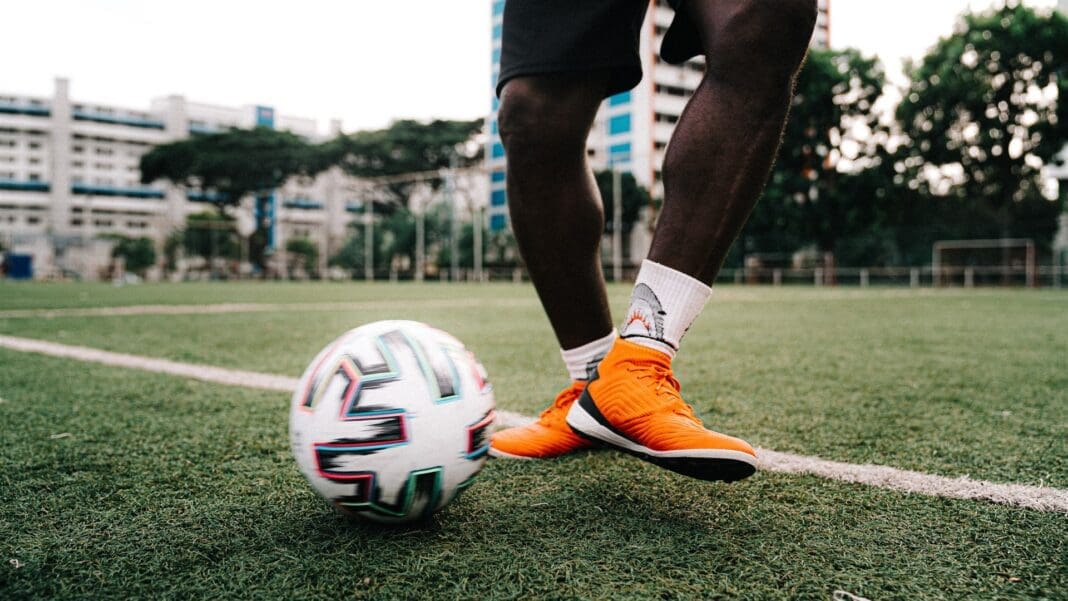Channel your inner De Bruyne with these simple exercises.
Passing is one of football’s most crucial skill sets that is often overlooked today where everyone is keen on producing juggling tricks and golazos. In truth, football is mostly made up of simple passes and quick movements, leading to a chain of combinations that puts you from your goalkeeper to your goal. Passing is a basic building block of any football game and mastering the pass is essential to success on the pitch.
In our new series helping the common footballers improve their performance, we speak to Coach Dennis Ikogho from ESPZEN Soccer School to get tips on improving your technical performance. In this iteration, Coach Dennis shares how you can improve your passing during a match though a series of training exercises and tips.
Practice the wall pass and return
One of the hardest things to master in football is judging the weight of the pass. Hit it too hard and your teammate won’t be able to reach it or he/she will find it too hard to control. Hit it too slow and an opponent might intercept or lose an opportunity to get behind the opposition defence.
The wall pass exercise is great for improving your weight of the pass, accuracy and ball control. Better still, you can do this at home. All you need is a football and a wall you can bounce the ball against for it to return to your feet.
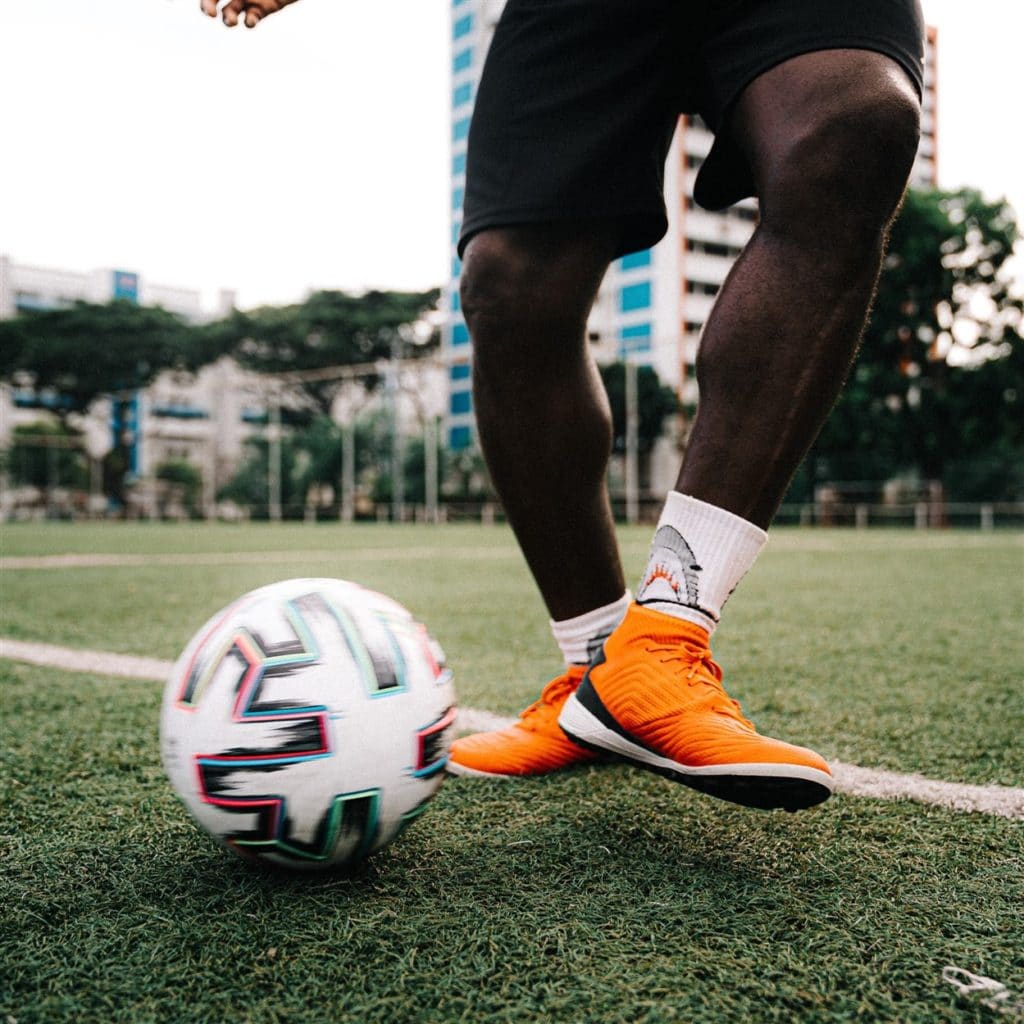

Coach Dennis recommends you challenge yourself in many ways to improve with the ball at feet. “Start by passing with the inside of your foot, 5 metres away from the wall. Pick a spot and make sure you keep the ball low. Focus on hitting the same spot and pass with just the right amount of power and angle so that the ball comes back to you at a comfortable pace and low height. This will get you used to the right weight of the pass, your technique and also get used to receiving the ball.”
“Once you’ve gotten better at this, vary your routine. Try passing and receiving with the outside of your foot instead. Also challenge yourself to move further back and make passes from longer distances (7-10 metres)”.
Pass and move with a partner
A slight variation on the wall passes, this time work with a teammate on this exercise during warm ups before a game. Look to create a zone in the shape of a square or triangle with each point 1 metre apart. You can use a cone or even water bottles to mark the edge of the zone. With 1 player in the zone and the partner outside, have both of them pass the ball to each other.
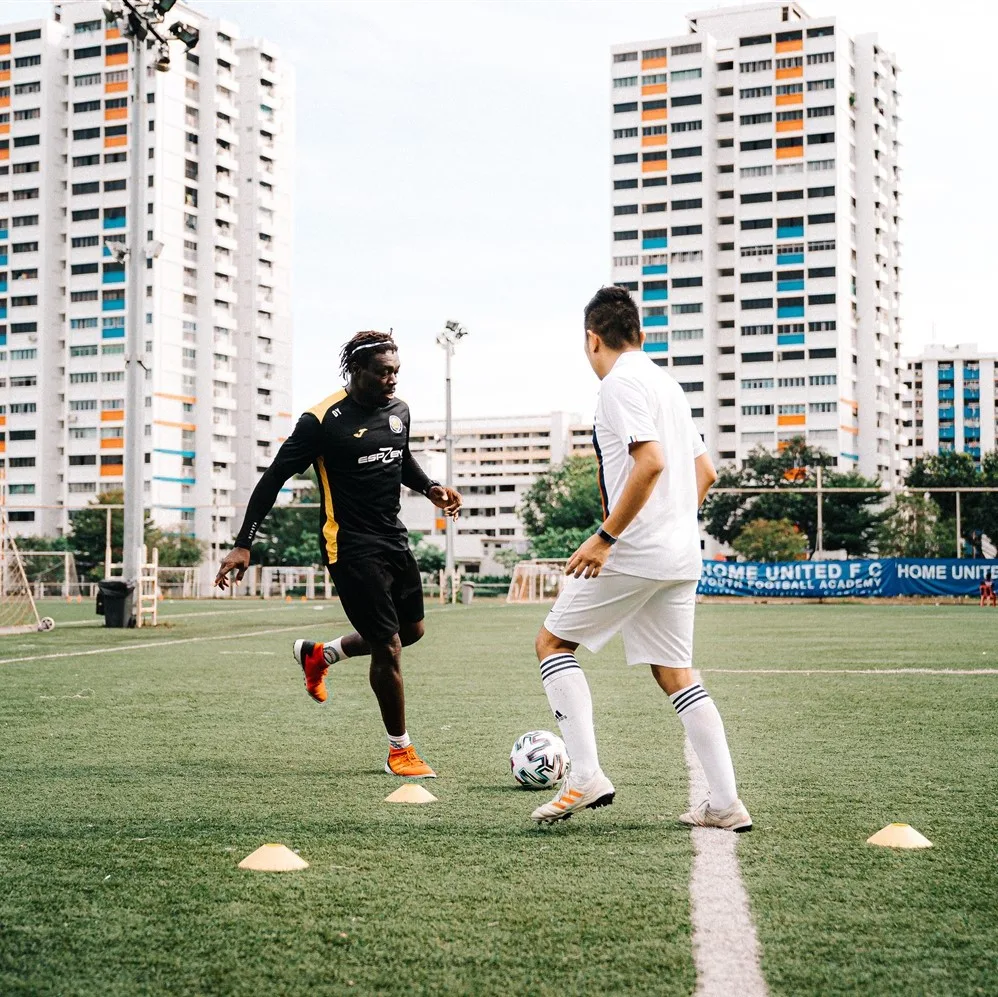

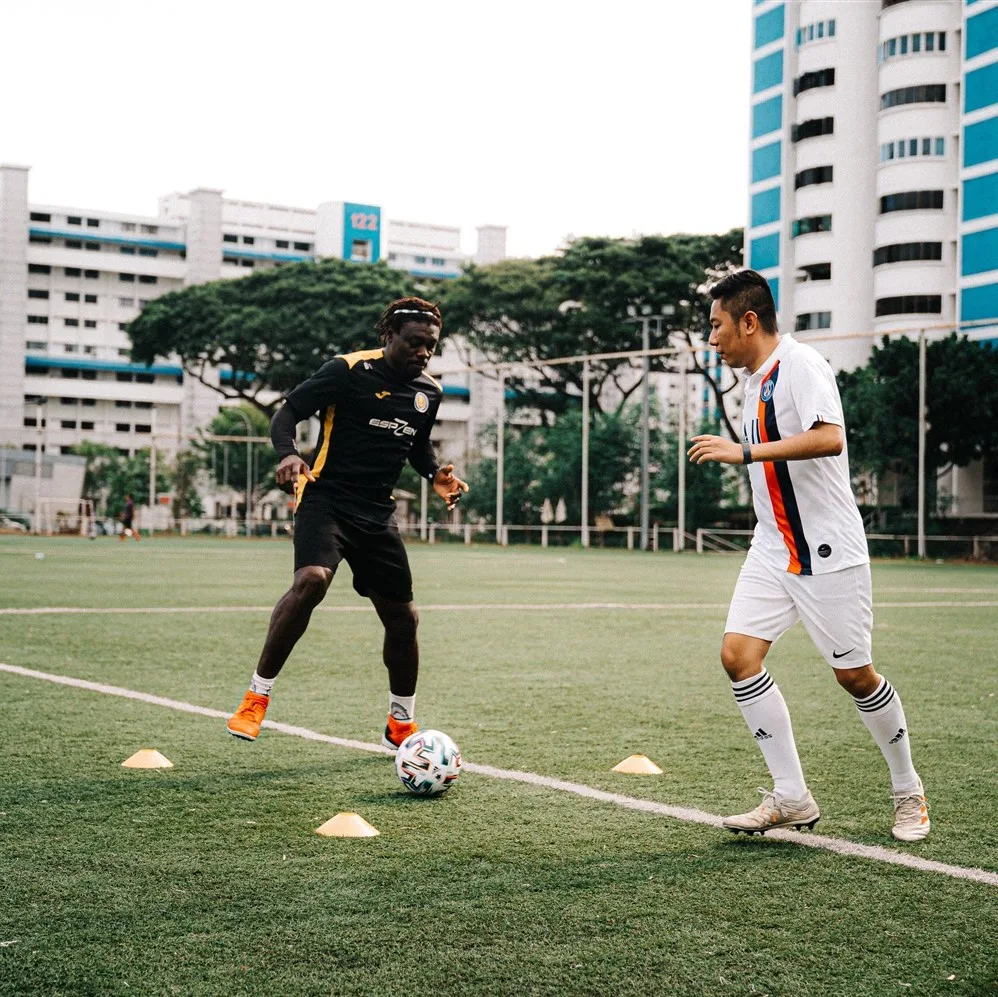

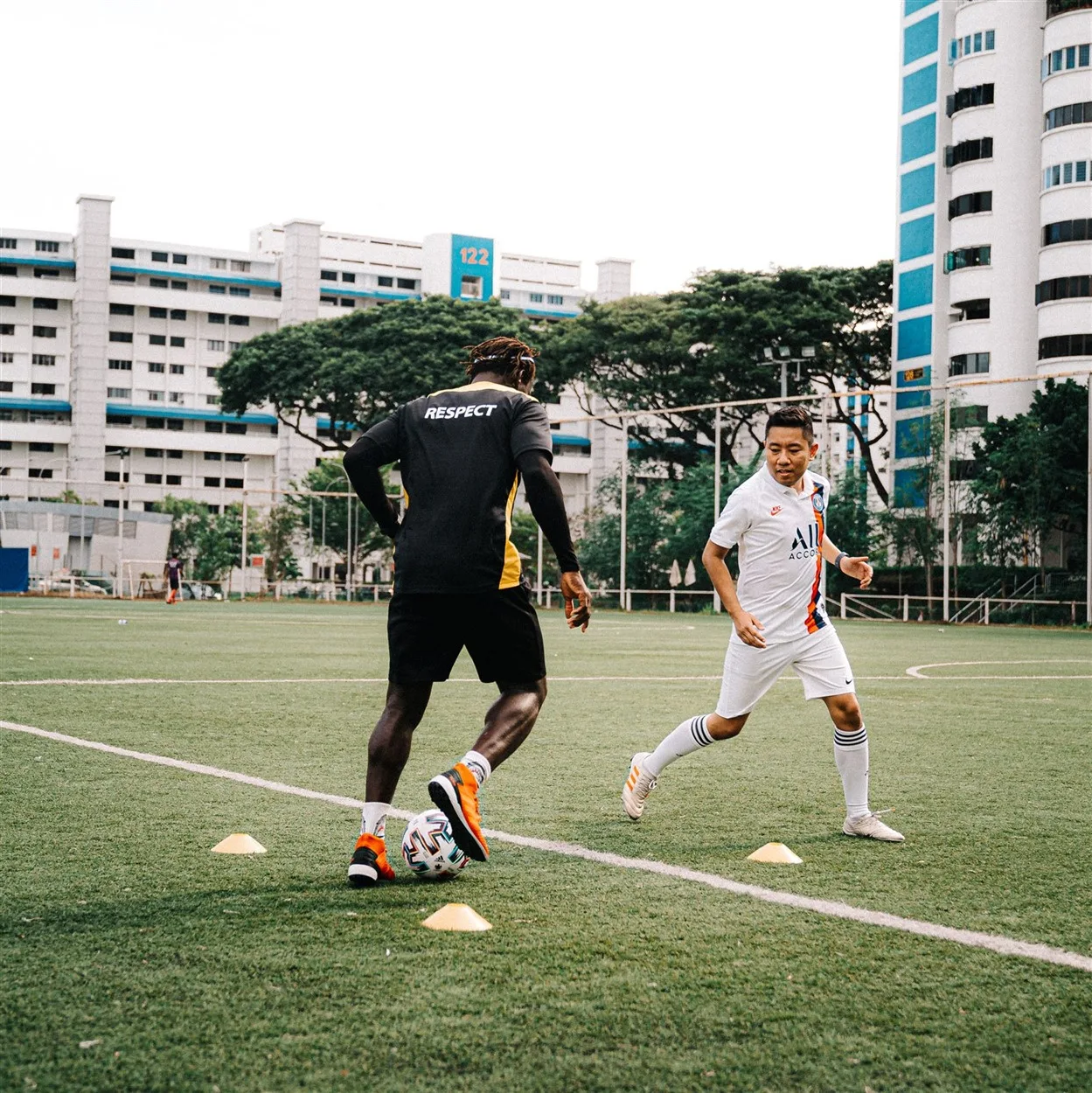

The player outside should move around the perimeter of the zone, randomly changing his/her direction clockwise and anti-clockwise. The player within the zone has to adapt to the changes in direction while looking to receive and return the passes successfully.
Coach Dennis adds, “In football, you’re always in motion so this is a good way to get used to passing and receiving the ball while moving. The unpredictability of your partner’s changes in direction also replicates how a game can change in an instant. Do try to spend 1 minute in the zone before switching with your partner.”
Receive on the half turn
How do the likes of Mesut Ozil, Xavi and David Silva always seem to have time on the ball despite not being physically superior to the opposition? They’re always one step ahead to receive and move the ball.
“Receiving on the half turn means that half your body is facing the your teammate who’s passing to you, and the other half, facing the direction you want to pass to. Many players receive the ball, take an extra second to shift their body and then make their pass. By receiving on the half turn, you kill 2 birds with 1 stone and save that extra second by receiving the ball while already moving in the direction you intend to go towards.”
“Football is decided in small margins. That saved second can be the difference between putting your teammate through on goal and your opponent blocking your passing option.”
Always look up before passing
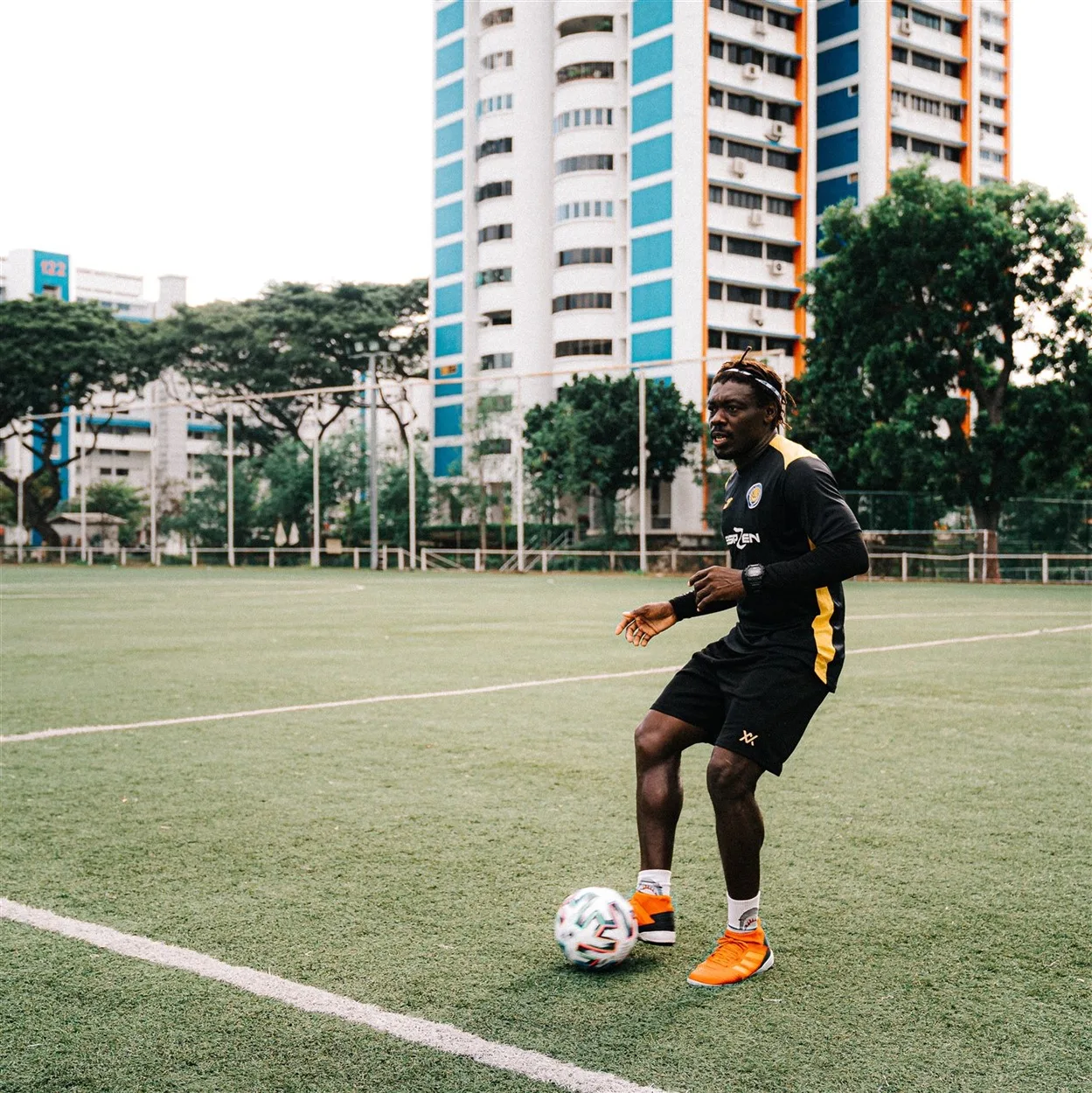

“Your eyes always tell your feet where to go,” reminded the Coach. Awareness is crucial when figuring out where to pass to. Constantly scan the pitch to know where your mates are.
And when you have the ball, keep your head up and make sure you can see where you’re passing to. With practice, your body will adjust and angle itself to ensure the ball will be passed in the right direction. Many make the mistake of looking down at the ball and skewing the ball wide.
Play it simple
It looks amazing when players on TV make those angled, long-range “Hollywood” passes. It’s not an easy skill and it requires immaculate timing, vision and ability to pull it off. 95% of the time, however, the situation in football calls for a simple pass sideways or backwards to reset the play and start over.
“If the pass is not available, don’t force it. Keep it simple and pass to your teammate who is available, even if it’s backward. You want to love the ball and take care of the ball. Forcing a pass more often than not leads to a loss in possession. Always look to keep the ball.”
Well said, Coach.
Special thanks to the good people of ESPZEN Soccer Schools for working with us on technical training tips. If you’re keen to sign up for classes, they have classes for kids and adults. Follow our Insta-stories for updates as we take you through each week’s classes.
Finally, a big thank you to The Cage at HYFA for allowing us to shoot on their newly relaid 11-a-side turf. Do visit The Cage if you’re looking for a pristine pitch to play on.

